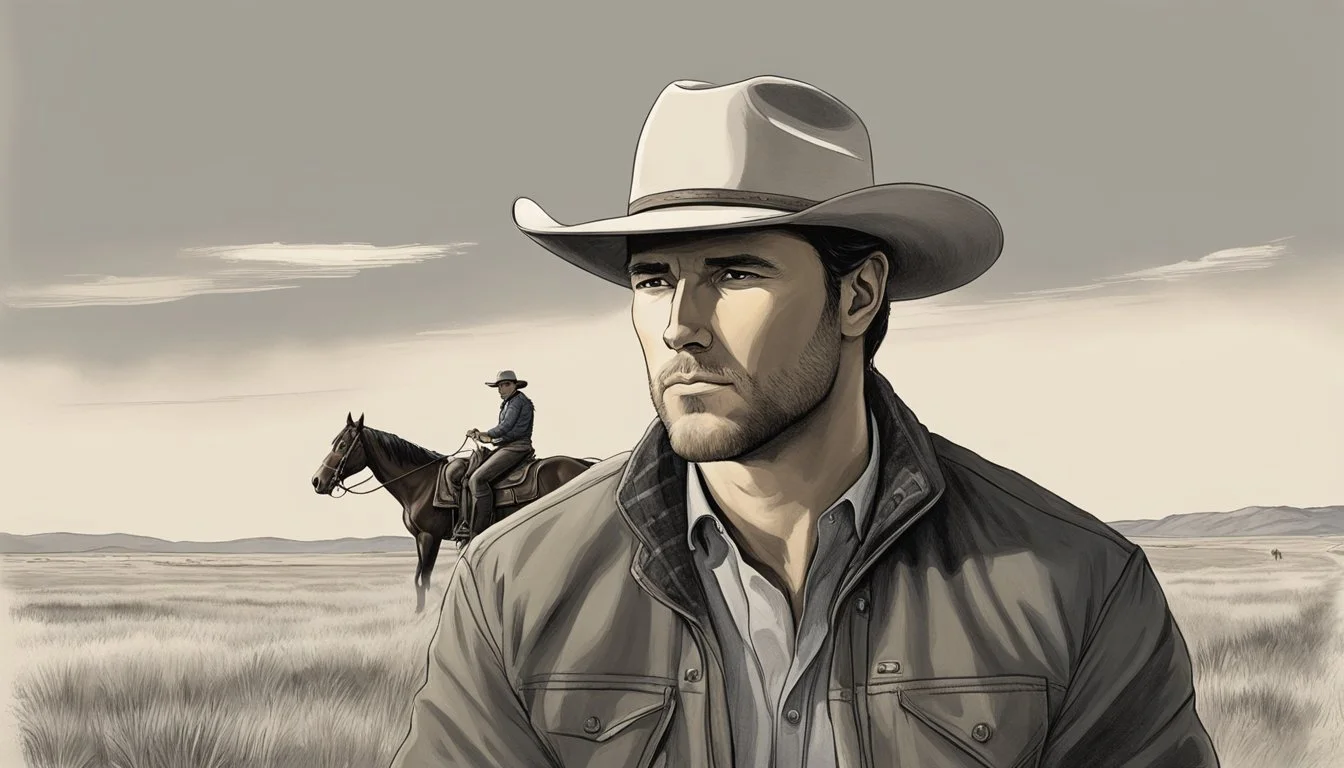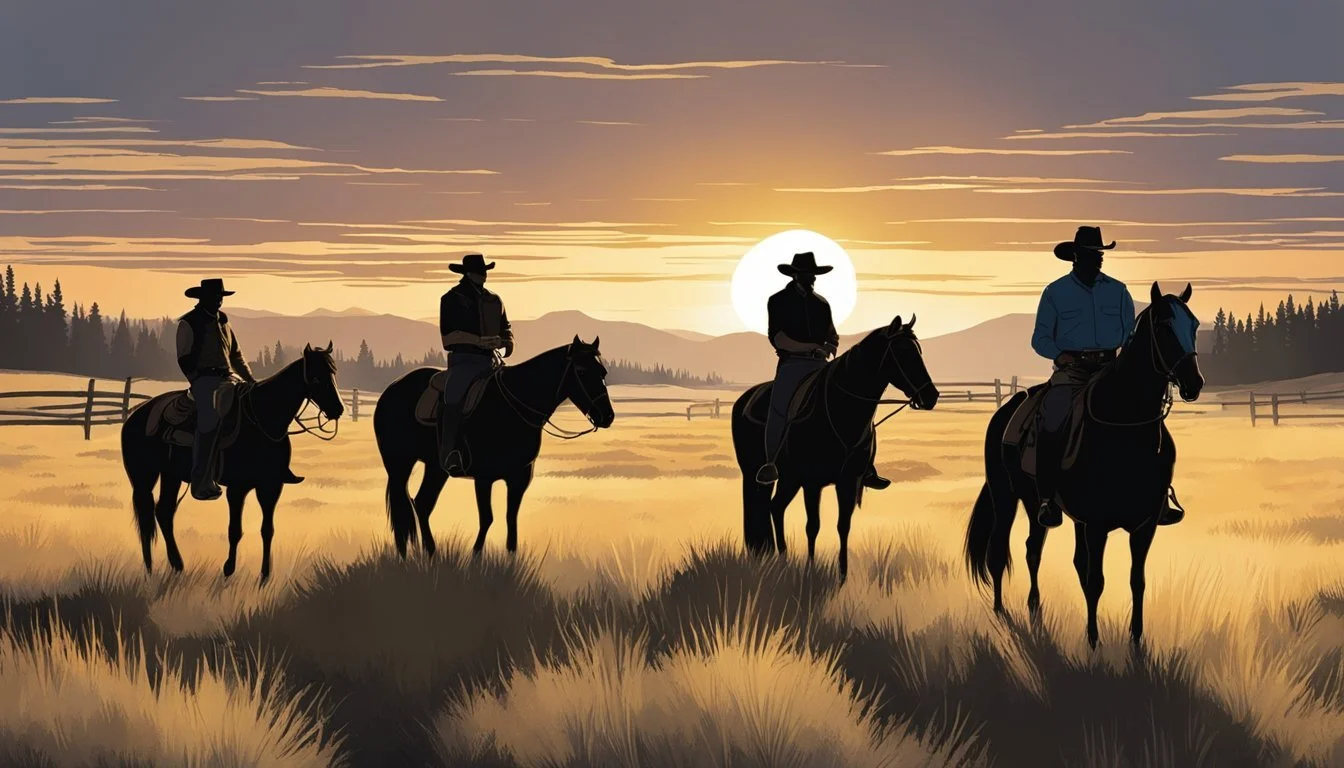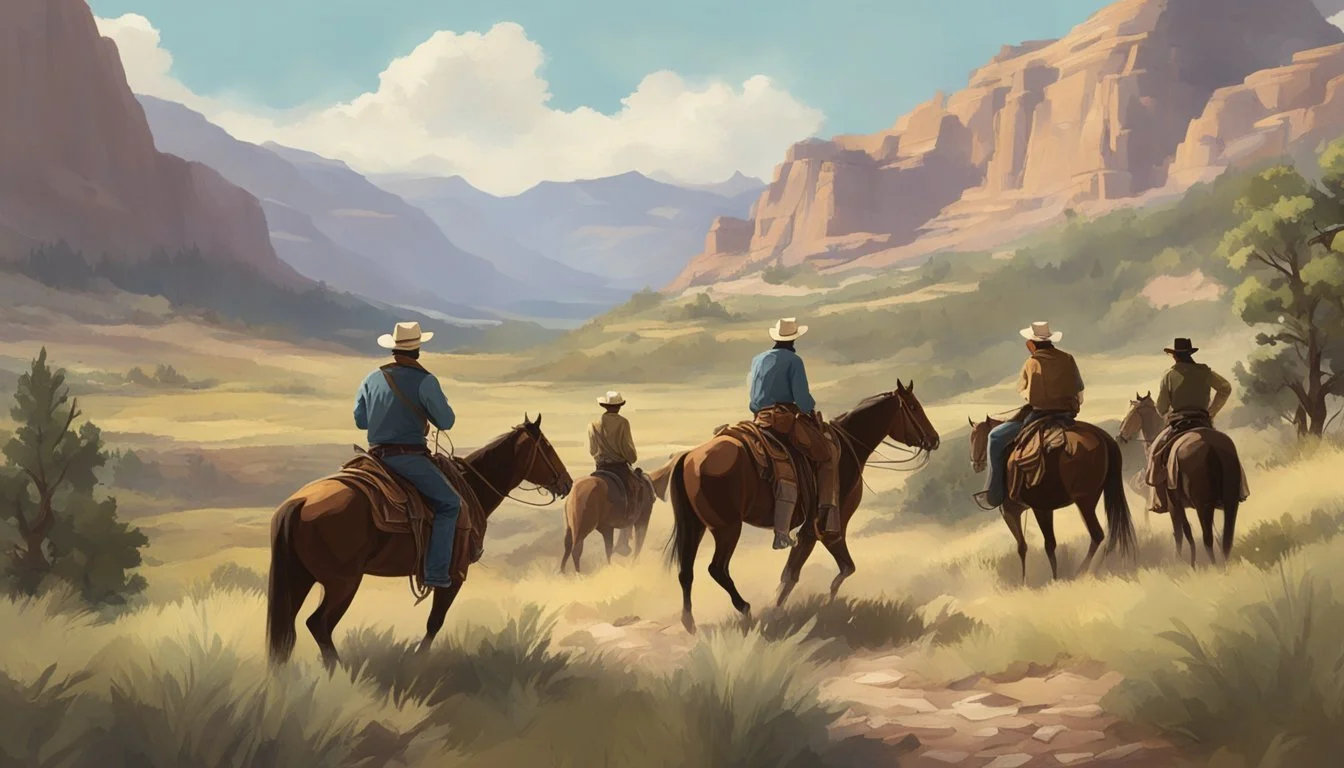Kayce Dutton's Shocking Transformation Into a Buddhist Monk Rocks Yellowstone!
Kayce Dutton's journey in Yellowstone has been marked by internal struggles and a search for identity. As the youngest son of John Dutton, Kayce has grappled with his responsibilities to the family ranch and his desire for personal freedom. His character arc throughout the series has explored themes of loyalty, duty, and self-discovery.
If Kayce decided to become a Buddhist monk, it would represent a radical departure from his current path and potentially change the entire dynamic of the Dutton family. This hypothetical scenario would see Kayce abandoning his roles as a rancher, husband, and father to pursue a life of spiritual enlightenment. Such a decision would likely stem from his ongoing quest for inner peace and his desire to break free from the cycle of violence that has defined much of his life.
Luke Grimes' portrayal of Kayce has shown a character capable of deep introspection and surprising choices. While becoming a Buddhist monk might seem far-fetched, it aligns with Kayce's continuous struggle to find his place in the world. This dramatic shift would undoubtedly create ripple effects throughout the Yellowstone universe, potentially altering the course of the Dutton legacy and the future of the ranch.
Kayce Dutton's Character Arc
Kayce Dutton's journey in Yellowstone is marked by personal growth, family conflicts, and spiritual revelations. His path from Navy SEAL to potential heir of the Dutton Ranch showcases a complex character grappling with loyalty, identity, and the weight of family legacy.
Early Life and Navy SEAL Background
Kayce Dutton's formative years were shaped by the rugged landscape of Montana and the expectations of the Dutton family. As a young man, he chose a path different from the ranch, enlisting in the Navy and becoming a SEAL. This decision set him apart from his siblings and strained his relationship with his father, John Dutton.
His military service honed his skills in leadership and combat, traits that would later prove valuable in protecting the Dutton Ranch. The discipline and tactical thinking Kayce developed as a SEAL often clash with the more traditional ranching methods, creating tension within the family dynamic.
Kayce's Place in the Dutton Family
Upon returning to Montana, Kayce finds himself caught between two worlds. His marriage to Monica, a woman from the nearby Indian Reservation, further complicates his position within the Dutton family. Initially estranged from his father, Kayce gradually steps into a more prominent role at the Yellowstone Ranch.
His unique perspective as both an insider and outsider to the Dutton legacy makes him a valuable asset in navigating conflicts with neighboring tribes and encroaching developers. Kayce's loyalty to his family is tested repeatedly, forcing him to make difficult choices that impact both his immediate family and the larger Dutton clan.
Struggles and Conflict Resolution
Kayce's character is defined by his ability to straddle multiple worlds. He acts as a bridge between the Dutton Ranch and the Broken Rock Reservation, often finding himself torn between competing loyalties. His role as a father to Tate adds another layer of complexity to his decision-making process.
Throughout the series, Kayce faces numerous challenges:
Balancing family obligations with personal aspirations
Resolving conflicts between ranchers and Native Americans
Confronting violent threats to the Dutton Ranch
His approach to problem-solving often involves a mix of diplomatic negotiations and decisive action, drawing on both his SEAL training and his understanding of local dynamics.
Kayce's Vision and Its Implications
A pivotal moment in Kayce's character development occurs during his participation in the Native American ritual of Hanbleceya, or vision quest. This spiritual journey provides Kayce with profound insights into his past, present, and potential futures.
The visions he experiences during this ritual are cryptic yet significant:
A glimpse of his deceased brother
Scenes of both violence and peace
Symbolic representations of choices and consequences
These visions serve as a turning point for Kayce, influencing his decisions and actions in subsequent episodes. They hint at possible paths forward for both Kayce and the Dutton family, adding a layer of mysticism to his pragmatic worldview.
Synthesis of Buddhism and Kayce's Journey
Kayce Dutton's path intersects with Buddhist principles in unexpected ways. His search for meaning and inner peace aligns with core Buddhist teachings, despite his ranching background.
Foundations of Buddhism
Buddhism emphasizes mindfulness, compassion, and the pursuit of enlightenment. These concepts resonate with Kayce's introspective nature. The Four Noble Truths form Buddhism's foundation:
Life involves suffering
Suffering arises from attachment
Suffering can be overcome
The Eightfold Path leads to liberation
Kayce's experiences with loss and conflict mirror the first two truths. His quest for peace reflects the third and fourth.
Buddhist Principles vs. Kayce's Values
Kayce's cowboy ethos and Buddhist ideals share surprising commonalities:
Buddhist Principle Kayce's Value Non-violence Reluctance to use force Mindfulness Attentiveness to land and animals Detachment Struggle with family obligations
His role as a rancher involves animal stewardship, which aligns with Buddhist respect for all living beings. However, Kayce's duty to protect Yellowstone often conflicts with non-violence.
Life as a Buddhist Monk
As a monk, Kayce would embrace a life of simplicity and contemplation. Daily routines might include:
Meditation practice
Studying Buddhist texts
Performing community service
This lifestyle contrasts sharply with ranch management. Yet, Kayce's connection to nature and animals could translate to mindful care of monastery grounds.
Monastic vows of celibacy and non-possession would challenge Kayce's family ties. His martial skills might find new purpose in disciplined martial arts like Shaolin kung fu.
Impact on the Yellowstone Series
Kayce Dutton's hypothetical decision to become a Buddhist monk would drastically alter the show's dynamics, spark diverse fan reactions, and open up new storytelling possibilities. This transformation would reshape character relationships and the ranch's future.
Shift in the Show's Dynamics
Kayce's departure for a monastic life would create a power vacuum within the Dutton family. John Dutton would lose a key ally in protecting the ranch, forcing him to rely more heavily on Beth and Jamie. This shift could intensify sibling rivalries and family conflicts.
Rip Wheeler might take on a larger role in ranch operations, potentially causing tension with other family members. Monica and Tate's storylines would need significant restructuring, possibly leading to their increased involvement with the reservation.
The series' focus on Western themes and cowboy culture would be challenged, requiring writers to balance Kayce's spiritual journey with the show's established tone.
Fan and Critic Reactions
Kayce's drastic change would likely polarize the Yellowstone fanbase. Some viewers might applaud the bold narrative choice, seeing it as a refreshing departure from typical Western tropes. Others could express disappointment, feeling that Kayce's character arc has been abandoned.
Critics might praise the show for exploring themes of personal growth and redemption. However, concerns about maintaining the series' identity could arise. Social media platforms would likely buzz with fan theories and debates about Kayce's motivations and the impact on other characters.
Ratings and viewership could fluctuate as audiences adjust to the new direction.
Possible Storylines Post-Transformation
Kayce's Buddhist journey could introduce storylines exploring the clash between Eastern philosophy and Western values. Episodes might alternate between Kayce's monastic experiences and the ranch's ongoing struggles.
The show could delve into Kayce's inner conflict as he navigates his new path while grappling with loyalty to his family and past. This internal struggle might culminate in a pivotal decision about returning to the ranch or fully embracing his new life.
Interactions between Kayce and other characters during visits or crises could provide compelling drama. The series might explore how Kayce's transformation influences the choices and perspectives of those around him, potentially leading to unexpected alliances or conflicts.
Cultural and Societal Implications
Kayce's hypothetical decision to become a Buddhist monk would have far-reaching effects on Yellowstone's portrayal of Indigenous cultures and spirituality in modern media. This shift would challenge existing narratives and spark discussions about representation and faith.
Representation of Indigenous Peoples
Kayce's transition to Buddhism could create an interesting juxtaposition with the show's existing Native American characters. It might prompt comparisons between Buddhist practices and traditional Indigenous spirituality, potentially highlighting similarities and differences.
The show could explore how Chief Rainwater and others from the Broken Rock Reservation react to Kayce's new path. This could lead to nuanced conversations about cultural appropriation, spiritual seeking, and the complex relationships between different belief systems.
Yellowstone might delve into how Kayce's choice impacts his connection to his Indigenous heritage. This could raise questions about identity, belonging, and the fluidity of cultural affiliations in modern society.
Discussing Spirituality in Modern Television
Kayce's embrace of Buddhism would introduce a new spiritual element to Yellowstone's narrative. This could open doors for broader discussions about faith, philosophy, and personal growth in contemporary media.
The show might explore how Kayce's spiritual journey resonates with or challenges viewers' own beliefs. This could position Yellowstone as a platform for examining the role of spirituality in today's increasingly secular society.
Kayce's transformation could spark debates about the authenticity of spiritual portrayals in popular culture. It might raise questions about how accurately television can depict complex spiritual practices and philosophies.
The storyline could also address the growing interest in Eastern spirituality in Western cultures. This could provide social commentary on cultural exchange, globalization, and the search for meaning in modern life.
Historical Influences and References
Kayce Dutton's potential decision to become a Buddhist monk draws from deep historical roots and cultural intersections. The Dutton family's legacy and Montana's ranching history provide compelling context for this hypothetical spiritual shift.
1883 Prophecy and Its Resonance
The 1883 prophecy, a pivotal element in Yellowstone lore, foreshadowed significant changes for the Dutton lineage. This prophecy, revealed in the prequel series "1883," hinted at future trials and transformations for the family. Its echoes resonate through generations, potentially influencing Kayce's spiritual journey.
The prophecy's cryptic nature left room for various interpretations. It spoke of challenges and choices that would shape the Duttons' destiny. Kayce's hypothetical turn to Buddhism could be seen as a fulfillment of this ancestral foresight.
Real Ranching History in Montana
Montana's ranching heritage forms a crucial backdrop to Kayce's story. The state's cattle industry dates back to the 1860s, shaping its cultural and economic landscape. Ranches like the fictional Dutton Ranch draw inspiration from real-life counterparts.
These historical ranches faced numerous challenges, from harsh weather to economic fluctuations. Many ranching families diversified their interests or sought alternative paths to survive. Kayce's potential shift to Buddhism mirrors this adaptability.
Montana's ranching culture also intersected with various spiritual traditions. Native American beliefs and practices influenced some ranchers, while others embraced different faiths. This diverse spiritual landscape provides a realistic context for Kayce's imagined Buddhist path.





